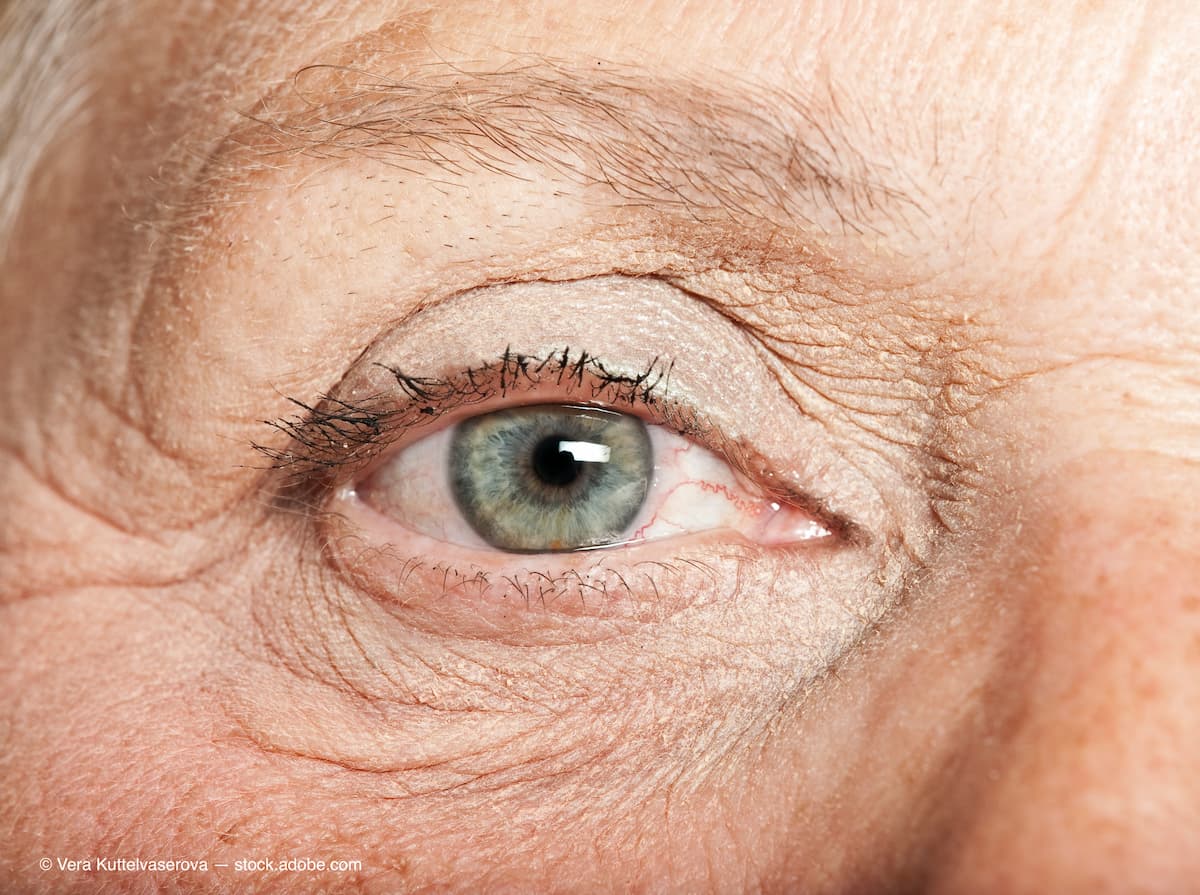Dry eye disease treatment improves corneal staining
An important take-away was the total and central corneal staining score improving after only 2 weeks of treatment.
The authors reported that instillation of cyclosporine provided a greater improvement in the tCFS compared with the vehicle. (Image credit: Adobe Stock/Vera Kuttelvaserova)

The use of water-free topical cyclosporine 0.1% solution to treat patients with moderate to severe dry eye disease (DED) was found to have clinically meaningful results. The study group observed a significantly greater reduction in the total corneal fluorescein staining (tCFS) score compared with vehicle.1
A treatment that both provides rapid onset of action and is well-tolerated would fill an important gap in this patient population, the investigators pointed out.
The ESSENCE-2 study was a randomized, double-masked, vehicle-controlled, clinical trial that assessed the efficacy, safety, and tolerability of a water-free cyclosporine ophthalmic solution, 0.1% (CyclASol, Novaliq GmbH). The study included 834 patients with moderate to severe DED who were randomized to active treatment (n=423) or vehicle (n=411) following a 14-day run-in period during which they instilled an artificial tear twice daily.The patients instilled either cyclosporine or vehicle twice daily for 29 days and the results were compared.
The study period ran from December 5, 2020, to October 8, 2021, at US 27 sites. The primary end points were the changes in the tCFS (0-15 [best to worst] on the National Eye Institute scale) and in the dryness score (0-100 [best to worst] on the visual analog scale) at day 29 compared with baseline. The investigators also evaluated the conjunctival staining, central corneal fluorescein staining, and the tCFS responders.
Investigators were led by Esen Akpek, MD, from the Wilmer Eye Institute, The Johns Hopkins University, Baltimore.
ESSENCE-2 results
The patients were a mean age of 57.1 years and almost three-quarters were women.
Participants were a mean age of 57.1 years, and 609 (73.0%) were female.
The authors reported that instillation of cyclosporine provided a greater improvement in the tCFS compared with the vehicle, ie, −4.0 grades versus −3.6 grades, respectively, at day 29, a difference that reached significance (P =0 .03). The dryness score improved compared with baseline in both groups, ie, −12.2 points for cyclosporine and −13.6 points for vehicle; the difference between the groups was not significant (P=0 .38).
“In the cyclosporine group, 293 participants (71.6%) achieved clinically meaningful reductions of 3 grades or higher in tCFS vs 236 participants (59.7%) in the vehicle group (change, 12.6%; 95% confidence interval [CI], 6.0%-19.3%; P < 0.001). These responders showed greater improvement in symptoms at day 29, including dryness (change, −4.6; 95% CI, −8.0 to −1.2; P = 0.007) and blurred vision (change, −3.5; 95% CI, −6.6 to −4.0; P =0 .03), compared with non-responders,” the investigators reported.
An important take-away point of the study was that the total and central corneal staining score showed improvements after only 2 weeks of treatment, with persistent efficacy through day 29. The rapid onset and magnitude of improvements of the corneal epithelial damage are potential differentiators to existing therapies, the authors emphasized.
Reference
1. Akpek EK, Wirta DL, Downing JE, et al. Efficacy and safety of a water-free topical cyclosporine, 0.1%, solution for the treatment of moderate to severe dry eye disease: the ESSENCE-2 Randomized Clinical Trial. JAMA Ophthalmol. Published online April 6, 2023. doi:10.1001/jamaophthalmol.2023.0709
Newsletter
Want more insights like this? Subscribe to Optometry Times and get clinical pearls and practice tips delivered straight to your inbox.